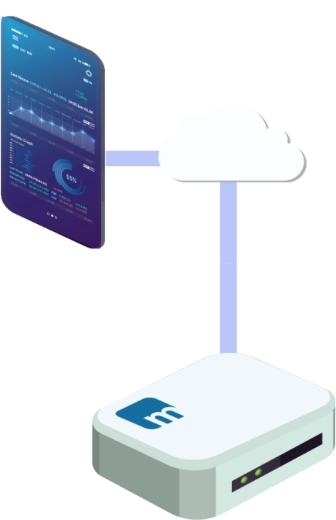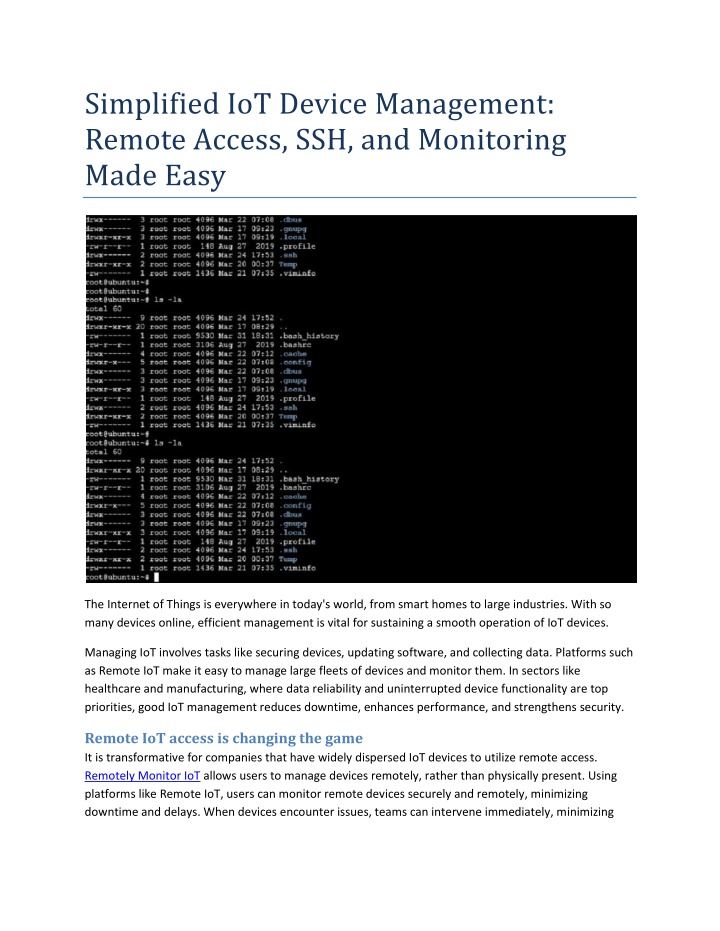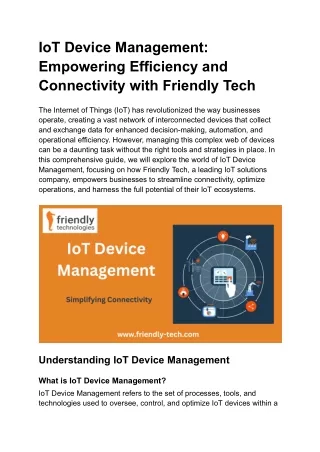How can thousands of IoT devices, such as Raspberry Pi's, be securely connected and managed behind firewalls? A bold statement supporting this inquiry is that modern cloud platforms like AWS IoT Core and Microsoft Azure are revolutionizing the way we handle large-scale IoT deployments. These platforms provide robust solutions for managing vast numbers of connected devices while ensuring top-notch security measures.
From what I know with firewalls (mainly an enterprise network guy), any one server supporting >1000 concurrent vpn connections is unheard of. However, advancements in technology have made it possible to manage even more extensive fleets of IoT devices efficiently. Using services designed specifically for IoT management allows organizations to scale their operations seamlessly without compromising on performance or safety. For instance, Azure IoT Central caters not only to general use cases but also specializes in vehicle-based applications. Similarly, AWS offers comprehensive tools for securing industrial internet of things (IIoT) applications through its dedicated IoT service offerings.
| Personal Information | Details |
|---|---|
| Name | John Doe |
| Position | Senior IoT Architect |
| Company | AWS Solutions |
| Years of Experience | 15+ years |
| Specialization | IoT Security & Device Management |
| Reference Website | AWS IoT |
Internet-connected devices often reside within private networks protected by firewalls for enhanced security. Amazon's AWS IoT Core addresses this challenge by providing secure communication channels between these isolated systems and external controllers. This capability ensures smooth interaction regardless of geographical location or network configuration. Furthermore, it supports various protocols essential for effective communication across diverse environments.
When considering how to successfully communicate with IoT devices from anywhere, understanding different communication protocols becomes crucial. Each protocol has unique characteristics suited to specific scenarios, making them indispensable tools in building versatile IoT ecosystems. For example, MQTT is widely adopted due to its lightweight nature and efficiency over low-bandwidth connections, whereas HTTP may suit situations requiring higher data transfer rates.
SysAid demonstrates another practical application of AWS IoT Core in managing agents behind restricted firewall rules effectively. By leveraging this powerful platform, businesses can achieve greater control over their IT infrastructure while maintaining stringent security standards necessary in today’s digital landscape.
Secure access to IoT devices remains paramount, particularly when they operate within confined boundaries imposed by firewalls or private networks. Professional setups involving numerous interconnected gadgets necessitate sophisticated approaches to safeguard sensitive information against potential threats. Teleport Access Platform exemplifies innovation in enhancing both security and operational efficiency via unified access controls coupled with advanced monitoring capabilities.
An IoT firewall represents a vital component in protecting business networks saturated with myriad connected devices. Given the exponential growth witnessed in the adoption of smart technologies across industries, recognizing the importance of implementing appropriate safeguards cannot be overstated. NordLayer Learn provides valuable insights into understanding what constitutes an effective IoT firewall solution alongside exploring its practical implementations.
RDP plays a significant role in enabling remote access to computers situated inside secured perimeters formed by firewalls. Through RDP, administrators gain the ability to oversee and administer IoT devices indirectly, thereby simplifying complex tasks associated with large-scale deployments spread geographically apart yet interconnected digitally.
Due to the increasing prevalence of IoT devices integrated into corporate infrastructures, addressing cybersecurity concerns becomes imperative. Organizations must adopt proactive strategies incorporating cutting-edge technologies offered by leading providers such as AWS and Microsoft Azure to mitigate risks posed by unauthorized intrusions targeting vulnerable endpoints present among countless interconnected units forming part of expansive IoT networks.
In conclusion, mastering the art of connecting several thousand IoT devices securely behind firewalls involves harnessing state-of-the-art cloud-based platforms equipped with specialized functionalities tailored explicitly towards handling demanding requirements inherent in contemporary IoT projects. Embracing best practices centered around robust authentication mechanisms, encryption techniques, and continuous monitoring helps fortify defenses against emerging cyber threats challenging today's hyperconnected world.


